
Halictidae is the second-largest family of bees with nearly 4,500 species. They are commonly called sweat bees, as they are often attracted to perspiration. Halictid species are an extremely diverse group that can vary greatly in appearance. These bees occur all over the world and are found on every continent except Antarctica. Usually dark-colored and often metallic, halictids are found in various sizes, colors and patterns. Several species are all or partly green and a few are red, purple, or blue. A number of them have yellow markings, especially the males, which commonly have yellow faces, a pattern widespread among the various families of bees. The family is one of many with short tongues and is best distinguished by the arcuate basal vein found on the wing. Females in this family tend to be larger than the males.
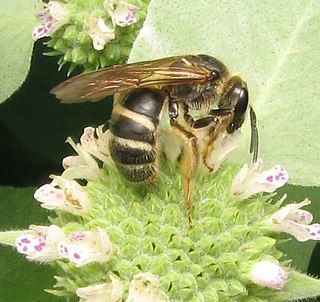
The sweat bee genus Lasioglossum is the largest of all bee genera, containing over 1800 species in numerous subgenera worldwide. They are highly variable in size, coloration, and sculpture; among the more unusual variants, some are cleptoparasites, some are nocturnal, and some are oligolectic. Most Lasioglossum species nest in the ground, but some nest in rotten logs.
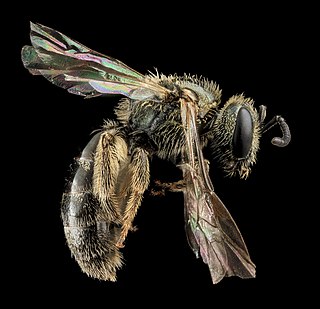
Lasioglossum gotham, commonly known as the Gotham bee, is an extant species of sweat bee native to Eastern and Midwestern United States.
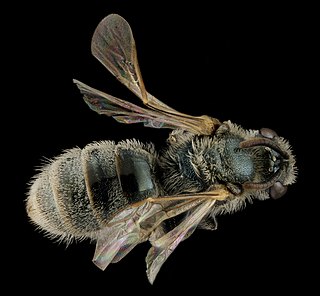
Lasioglossum marinum is a species of sweat bee in the family Halictidae.
Lasioglossum nigroviride is a species of sweat bee in the family Halictidae.
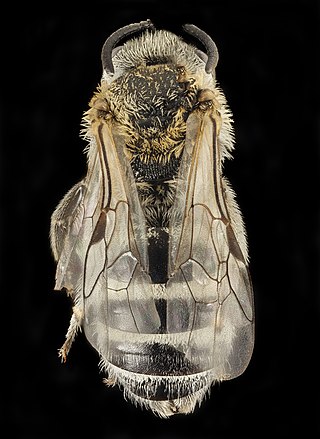
Lasioglossum sisymbrii is a species of sweat bee in the family Halictidae.

Lasioglossum pruinosum is a species of sweat bee in the family Halictidae.

Lasioglossum coriaceum is a species of sweat bee in the family Halictidae. A common name is leathery sweat bee.
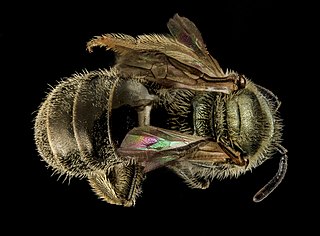
Lasioglossum versatum is a species of sweat bee in the family Halictidae. A common name is Experienced sweat bee.
Lasioglossum cinctipes is a species of sweat bee in the family Halictidae.
Lasioglossum albipenne, the white-winged metallic-sweat bee, is a species of sweat bee in the family Halictidae.

Lasioglossum pacificum is a species of sweat bee in the family Halictidae.

Lasioglossum coeruleum is a species of sweat bee in the family Halictidae.
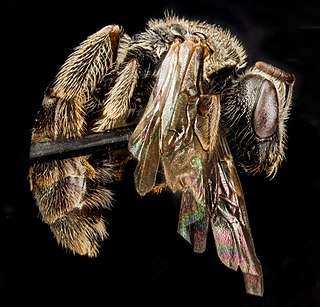
Lasioglossum oenotherae is a species of sweat bee in the family Halictidae.

Lasioglossum bruneri is a species of sweat bee in the family Halictidae.
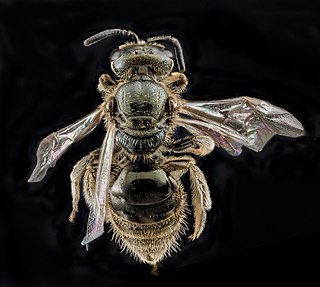
Lasioglossum lineatulum is a species of sweat bee in the family Halictidae.
Lasioglossum subviridatum is a species of sweat bee in the family Halictidae. It is one of the few sweat bees that nests in wood, and thus prefers woodland habitats.
Lasioglossum mellipes is a species of sweat bee in the family Halictidae.

Homalictus is a subgenus of bees in the genus Lasioglossum subfamily Halictinae of the family Halictidae. They are found in Sri Lanka, Southeast Asia, east across the Pacific to the Mariana Islands, Samoa, Fiji and are most prevalent in Australia.
Lasioglossum ephialtum is a species of sweat bee in the family Halictidae. A common name is nightmare sweat bee.















